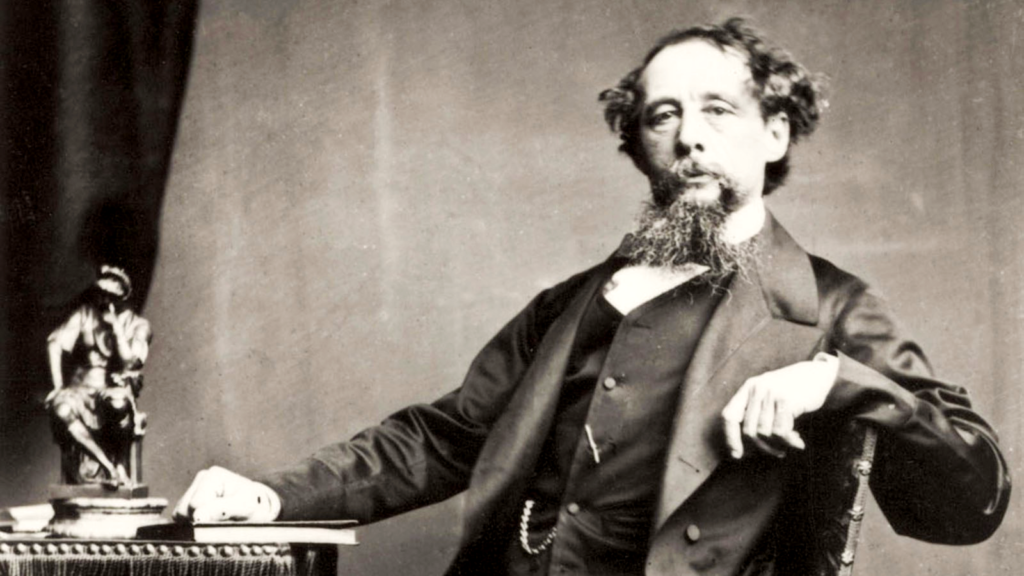
Biography of Charles Dickens is one of the most famous authors in the history of literature. His books were based on hard-hitting themes like poverty, child labor and slavery. Dickens’s novels were usually semi-autobiographical. His best works include Olive Twist, A Christmas Coral and hard Times.
Charles Dickens was born in Portsmouth, England on February 7, 1812 to John and Elizabeth Dickens. His father worked as a clerk in the pay office of the Royal Dockyard. Dickens had a hard childhood and his family struggled financially.
In 1822, they moved to London forced by poverty and settle in Camden town, a poor neighborhood of London. His experience in Chatham insured much of his adult work.
I loved her against reason, against promise, against peace, against hope, against happiness, against all discouragement that could be.”
― Charles Dickens, Great Expectations
Dickens father was imprisoned for debt when Charles was only twelve years old, due to which Charles was force to work in a shoe polish factory to support his family.
It had a profound psychological sociological impact on him. His experience with poverty left him with the most influential voice of the working class in his era. He went back to school for his final two years of education and graduated at the age of fifteen.
Dickens found a job as an office boy. During the 1830s, he worked as a reporter in many courts and newspapers. His time at the law firm became a stepping stone for Dickens’ writing career.
He became a parliamentary reporter in 1831. In 1833, he started to write short stories and essays for various publications. Dickens published his first story A Dinner at Poplar Walk, which also appeared in the Monthly Magazine in 1833.
Dickens continued his reporting career and joined the Morning Chronicle. His connections to these different magazine and newspapers helped him to publish many of his fiction books.
“Never close your lips to those whom you have already opened your heart.”
― Charles Dickens
One of his famous works from the time was The Pickwick Papers of the Pickwick Club. It was published monthly till 1837. The Pickwick Papers was a great success.
He grew his literacy career and became a full time novelist. He produced many works in a short period like Oliver Twist in 1837 and Nicholas Nickleby in 1839.
The Old curiosity Shop and Barnaby Rudge were written as part of the Master Humphrey’s Clock series in 1840 and 1841. Before he released his works as books, he published them in monthly installments.
One out of every people read and followed Dickens’ writings in the Victorian times. In 1842, he went to the United States and then to Canada. There, he wrote his controversial piece, American Notes For General Circulation (1842).
The story was about his objection to American slavery. Dickens’ series of five Christmas books soon followed. During 1843-49, Dickens published three stories.
The theme for his stories was simply Christmas. The books were A Christmas Carol, the Chimes and the Cricket on the Hearth.
Out of these three books, A Christmas Carol was released in 1843. It became an instant number of movie adaptations. He continued to published novels like Dombey and Son and The Life of Our Lords.
During the late 1850s, Dickens worked as an editor for the weekly journal Household Words. He released novels like Blake House, Hard Times, Little Dorrit and A Tale of Two Cities during this time. These novels were very successful and many more people started appreciating his writing style.
In 1865, he got into an accident while travelling in England. He helped save many lives in that accident. Affected by this rail Accident, he wrote a short story called The Signal-Man in 1866. His last few works include his wildly popular novel, and Dickens’ personal “favorite child”, David Copperfield (1850).
The book was seen as a semi-autobiography of Dickens; life, with characters inspired by his parents. He narrated the struggle of his life in the book, from working in a shoe factory and then going on to become a reporter.
“There are books of which the backs and covers are by far the best parts.”
― Charles Dickens
In 1836, he married Catherine Hogarth daughter of the editor of the Evening Chronicle. The couple had ten children before they got separated in 1858. In 1870, he suffered from paralysis for the second time. He remained unconscious and died on 9th June, 1870 at the age of 58 in England.
